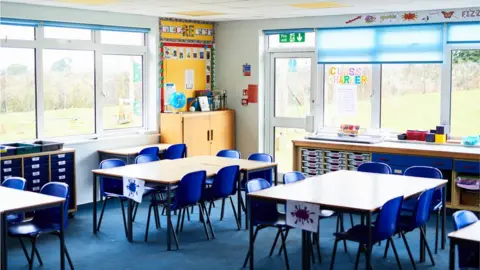Raac concrete surveys under way at 120 Northern Ireland schools
 10'000 Hours
10'000 HoursSurveys will be carried out at 120 schools across Northern Ireland to check for collapse-prone concrete, the Education Authority (EA) has said.
It comes after dozens of UK schools had buildings closed or faced safety measures because Reinforced autoclaved aerated concrete (Raac) was found.
The concrete can become less stable and "crumbly" over time.
It led to schools in Northern Ireland being checked for Raac as a matter of urgency.
Now the Education Authority says it has identified 120 schools - about 10% of all Northern Ireland schools - for survey on the basis of building fabric, age and type of construction.
It said the safety of staff and pupils is of "paramount importance" and analysis of the survey results will "determine what further action is required in the coming months".
'Minimal disruption'
In a letter sent to schools on Monday, the Education Authority sought to offer reassurance that "any settings in which it (Raac) is present are likely to experience minimal disruption".
"If detected, it is anticipated that in most cases, children and young people will be able to continue attending school as normal," the letter stated.
Last week, the Department for Education in England said it had already surveyed more than 600 schools.
The department said it hoped to have identified the "majority" of affected schools within "a few weeks".
At the end of August the government published an official list of 147 schools in England it says has the crumbling concrete.
A total of 16 local authorities in Scotland have found potentially dangerous concrete in their schools, the Scottish government confirmed.
Investigations are also continuing in Wales, where two schools were forced to close.
What is Raac?
This lightweight "bubbly" form of concrete is usually found in the form of panels on flat roofs, as well as occasionally in pitched roofs, floors and walls.
It has a lifespan of around 30 years and most buildings using it will be coming to the end of their lifespan.
Its structural behaviour differs significantly from traditional reinforced concrete.
Moreover, it is susceptible to structural failure when exposed to moisture. The bubbles can allow water to enter the material.
